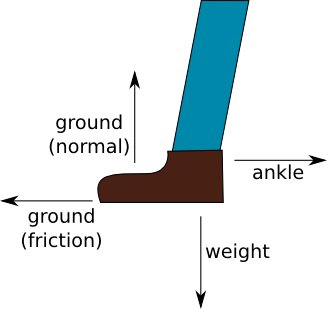Careful, the rope is out to get you!
Posted by David Zaslavsky on
I know, I know, this blog post is very late! If I’m going to post about a Mythbusters episode, I usually try to do it before the next one airs. But this topic — calculating the circumstances under which a rope will pull a person’s leg — turned out to be pretty complicated. Which of course made it impossible to give up on.
And after days of toil, I think I finally figured it out! If you’re the kind of person who finds complicated physical interactions fascinating, you’re going to love this post. The math isn’t too complicated; if you know what a differential equation is, you’ll be fine, but the physical reasoning is something you could probably spend a while wrapping your head around.
The setup
On the Deadliest Catch-themed Mythbusters episode which came out last week, one of the myths being tested was that if a person steps in a coil of rope, and that rope is attached to a crab pot (trap) that gets dropped over the side of the ship, the rope will be pulled tight enough around the person’s leg that it will drag them overboard, and down to the …
